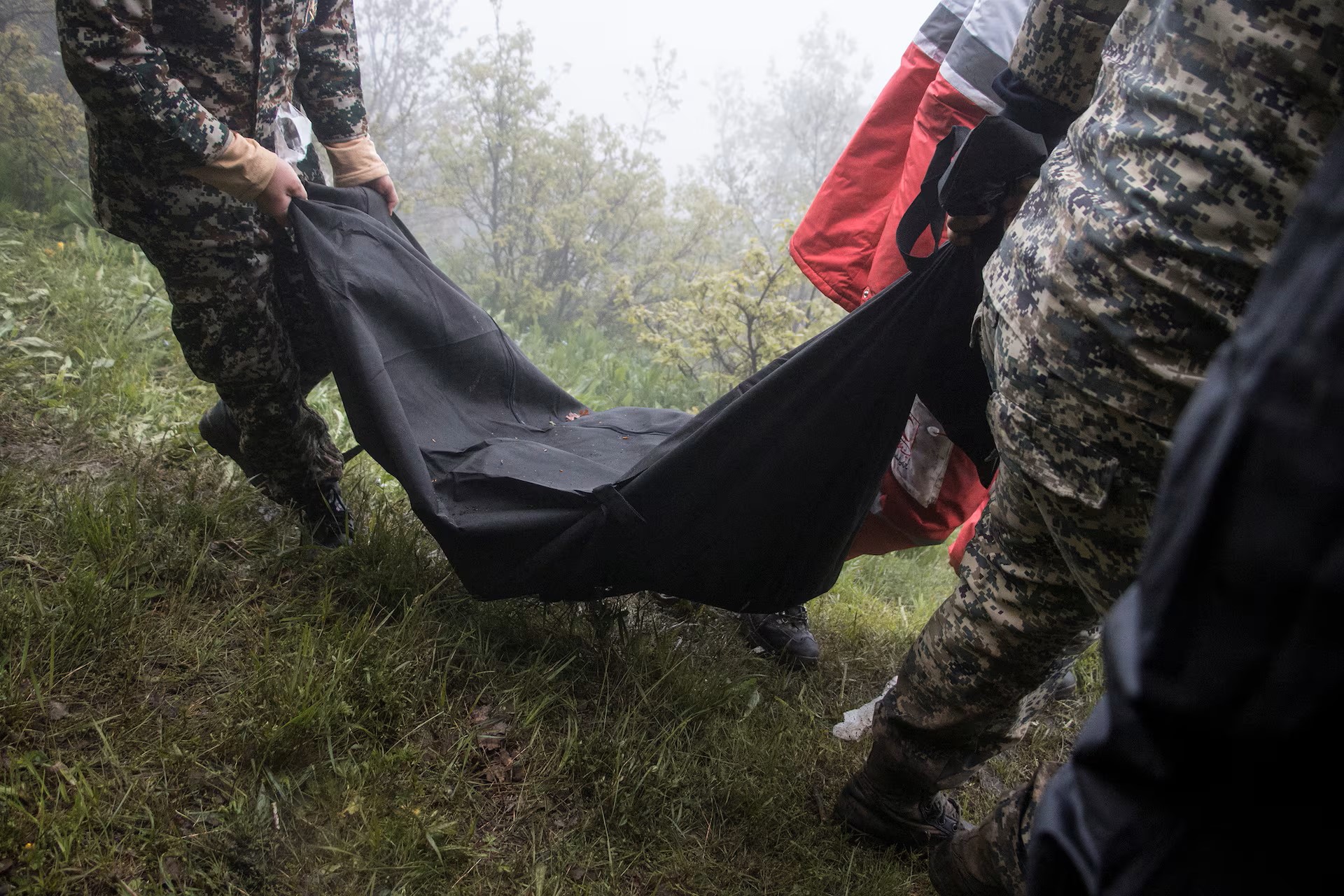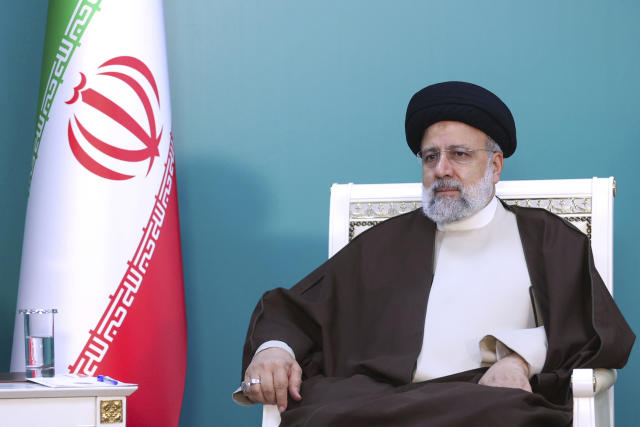Iranian President Ebrahim Raisi, a hardliner long seen as a potential successor to Supreme Leader Ayatollah Ali Khamenei, was killed in a helicopter crash in mountainous terrain near the Azerbaijan border.
 Moments after Iran’s state media confirmed the death of President Raisi and other leaders, the first visuals emerged showing rescuers carrying the bodies of the victims on Monday.
Moments after Iran’s state media confirmed the death of President Raisi and other leaders, the first visuals emerged showing rescuers carrying the bodies of the victims on Monday.
The charred wreckage of the helicopter, which crashed on Sunday carrying Raisi and Foreign Minister Hossein Amirabdollahian, was found early Monday after an overnight search in blizzard conditions.
Red Crescent and army rescuers located the bodies of the leaders on Monday morning and transferred them from the mountains to lower areas. Fresh visuals from the crash site showed rescuers covering the bodies and carrying them on stretchers in batches.
State TV did not provide an immediate cause for the crash, which occurred in Iran’s East Azerbaijan province. The helicopter also carried the governor of East Azerbaijan, other officials, and bodyguards, according to the state-run IRNA news agency.
Early Monday morning, Turkish authorities released drone footage showing what appeared to be a fire in the wilderness, suspected to be the helicopter wreckage. The coordinates indicated the fire was about 20 kilometers (12 miles) south of the Azerbaijan-Iranian border on a steep mountain.
Footage released by IRNA early Monday showed the crash site in a steep valley within a green mountain range. Soldiers speaking in the local Azeri language were heard saying: “There it is, we found it.”
The crash comes during a tumultuous time in the Middle East, recently unsettled by the Israel-Hamas war. Last month, under Supreme Leader Ayatollah Ali Khamenei’s direction, Raisi launched an unprecedented drone-and-missile attack on Israel. Under Raisi, Iran enriched uranium closer to weapons-grade levels, heightening tensions with the West, while supplying bomb-carrying drones to Russia for its war in Ukraine and arming militia groups in the region.
Meanwhile, Iran has faced years of mass protests against its Shiite theocracy over its ailing economy and women’s rights, making this a particularly sensitive time for Tehran and the country’s future.




